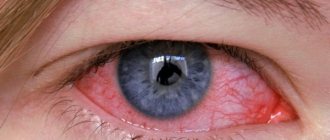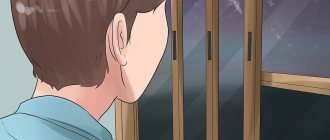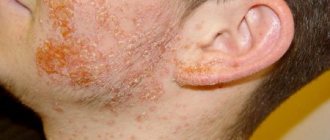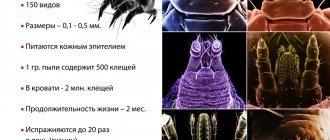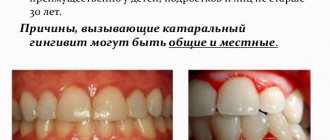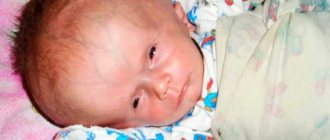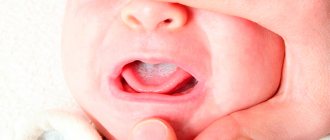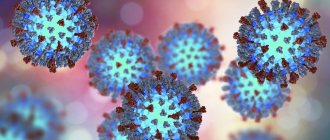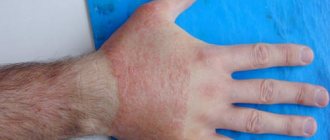Eye accommodation is the ability to see objects at different distances. This depends on the elasticity of the lens and its ability to bend to the required degree. The process of accommodation is normal only at a young age, because the elasticity of the lens during this period is greatest.
With age, it loses these properties and at the age of 40-45 a person often develops farsightedness. At the age of 70, the ability to accommodate in general is lost. Spasm of accommodation or false myopia refers to the category of functional visual impairment that is associated with spasm of the ciliary muscle. It is she who supports the lens.
Share
Tweet
Share
Cool
Send
Features of the pathology
Spasm can be of 3 types:
- Physiological is a response to visual overload when the eye tries to turn on the compensation mechanism. Characteristic of farsightedness and astigmatism.
- Artificial is always temporary, because it is associated with taking certain medications for eye examination, for example, Pilocarpine. This spasm does not require treatment and disappears on its own.
- Pathological – characterized by increased refraction. In this case, vision deteriorates sharply. The most dangerous variety.
In practice, spasm is more often of a mixed nature.
Causes
This type of disorder often occurs among schoolchildren and young people. This is due to high visual loads during this period.
Prolonged work at a short distance from the eyes is the basis of the violations. This could be reading, working on a computer, watching TV for a long time, or using gadgets. Another common reason is imperfection of the eye itself. After all, in order to look at an object better, you have to bring it closer to your eyes and strain your vision. At this moment, an increase in accommodation occurs, followed by a spasm. This often happens when the workspace is poorly lit.
Provoking factors:
- astigmatism;
- osteochondrosis of the cervical spine;
- unhealthy food;
- lack of vitamins;
- physical overload;
- vascular diseases;
- cerebrovascular accident;
- injuries to the eye area;
- traumatic brain injuries;
- hormonal changes during menopause;
- metabolic disorders;
- incorrect selection of lenses and glasses for astigmatism.
For schoolchildren and adolescents, the reasons may be:
- unlimited time in front of the TV and computer;
- incorrect furniture for working at a desk;
- reading in low light and at close distances - for example, lying down;
- long bright light in the eyes;
- violations of the daily routine: regular lack of sleep, sitting at home without fresh air;
- asthenia;
- poor nutrition – without vitamins and minerals;
- scoliosis;
- osteochondrosis of the neck.
Symptoms
Symptoms of eye muscle spasm are as follows:
- decreased vision when looking into the distance;
- rapid eye fatigue even with light loads and pain in them;
- dry eyes;
- burning and stinging;
- redness of the sclera and photophobia;
- temporal headaches, dizziness;
- double vision;
- general fatigue and irritability (especially in children).
Useful video
Mechanisms of visual accommodation:
Characteristic symptoms
The following signs may indicate possible visual impairment, including the development of accommodation spasm:
- when looking at objects at a great distance, the child begins to squint;
- weakness and fatigue occur after reading;
- redness of the eyeballs, a feeling of stinging and pain occurs in the eyes;
- the child bends very low to the notebook to write something;
- frequent headache;
- activity at school suddenly decreases.
Symptoms of the disease
Prolonged overstrain of the eye muscles often leads to the development of myopia, and given the high intensity of development of the visual organs and the entire body as a whole, a decrease in visual acuity rapidly progresses in schoolchildren. Such deviations can provoke the appearance of moderate or high myopia . The duration of false myopia can vary from 1-2 months to several years, and improper treatment or its complete absence often leads to serious problems with the functioning of the eyes.
Causes of spasm of accommodation of the eye
Treatment
Treatment of spasm of accommodation should be comprehensive. This means relaxation of spasm (direct impact on accommodation), active training treatment and general sanitation of the body.
Therapy includes medication and hardware treatment, gymnastics, and partial elimination of spasms using optical fogging. Radical methods such as surgical ones are not used. The success of treatment depends on the timeliness of treatment and detection of pathology.
Successful treatment will restore visual acuity by 70%. In 21.5% of cases, the pathology cannot be treated and remains unchanged, 8.5% is complicated by the transition to true myopia. This usually happens when treatment is started late and in children with a tendency to spasms.
To prescribe treatment, it is necessary to establish the causes of the disorder. Any therapy is prescribed only by a doctor; no amateur activity is allowed.
At an early stage, pathology can be treated without drugs, solely with exercises. They are selected by a doctor. Drug therapy includes eye drops, tablets to relieve spasms of the ciliary muscle, complexes of minerals and vitamins.
Hardware treatment
Electrical stimulation of the eyes with weak current pulses perfectly relaxes the ciliary muscle.
- Laser exposure activates biophysical and biochemical processes in the human body. The laser beam is directed directly into the eye, it inhibits all pathological processes, stimulating visual functions. This normalizes vision, relaxes and improves the functioning of the ciliary muscle. Moreover, the effectiveness of the laser is inversely proportional to the patient’s age. The laser does not give any untreated percentages; everything is restored 100%.
- Not long ago, a new ultrasound device that relieves ocular spasm of accommodation, especially in children. The method is based on the complex effect of pulsed red, infrared radiation and a constant magnetic field. They affect the area of the carotid sinuses, the neck and some active points of the body. All this has a beneficial effect on the accommodative apparatus and visual center in the cerebral cortex. Blood circulation in the cervical region improves, spasm and pain are relieved. The ultrasound method is safe and easy to use.
- Magnetic therapy - a special eye magnet with an alternating field is applied to the eyeball. The development of accommodation spasm slows down and vision improves
- Electrophoresis - allows you to use minimal doses of drugs, quickly delivering them to the posterior pole of the optical media of the eye. This makes it an indispensable method of treatment.
- Training computer programs (Flower, Relax-2, Contour, etc.) in combination with other methods of hardware treatment. They can alleviate the condition of many ophthalmological problems, including spasm of accommodation. The type of software is selected by a specialist individually, after studying the anamnesis in each specific case.
- The use of the Visotronika ophthalmic simulator-relaxator improves vision in patients with accommodation spasms. The device relaxes the ciliary muscle using automatic lens selection, which leads to the restoration of its functionality.
- At home, Sidorenko glasses . The range of effects of this device is quite wide, since it affects not only vision directly, but also all nearby muscles. Due to the light pulses, the pupil is, as it were, “massaged”, and the spasm of accommodation, thanks to this, is completely removed. The glasses have no side effects and can be prescribed to children from 3 years of age.
Diagnostics
Parents do not always correctly interpret the child’s complaints of prolonged headaches and eye fatigue, attributing this to age-related changes or school stress, so pathology is identified during a general preventive examination at school. The child should be shown to a pediatric ophthalmologist to conduct the following tests if an accommodation disorder is suspected:
- determined how much visual acuity has deteriorated using special devices;
- what is the optical reserve of accommodation;
- studied the refractive abilities of the lens;
- took a shadow sample for skiascopy;
- determined the consistency of movements and changes in the pupils of both eyes.
Muscle relaxation tablets
To relax the ciliary muscle, centrally acting muscle relaxants can be used: Sirdalud, Mydocalm, Tizanidine, Tolperisone, Baclofen, Spasmalin. Their use in this case is rare, since it is possible to relieve muscle spasms with simpler drugs. The course, dosage, and regimen are prescribed by a doctor.
Another group of drugs are products with lutein. They are used most often. Lutein does not dilate the pupils, as it does not affect either the circular or radial muscles of the eye. It only relaxes the ciliary muscle itself and the lens.
Its effect is very mild, and the preparations themselves are always made on the basis of natural ingredients. Therefore, there are no contraindications or side effects (except for an allergic reaction in rare cases).
Classification
There are several main types of accommodation spasm:
- Physiological – occurs as a compensation mechanism to improve vision. It is characteristic of pathologies such as hypermetropia and astigmatism.
- Artificial - associated with the effect on the organ of vision of certain medications that are used for eye examinations.
- Pathological - in this case, an increase in refraction is observed. This deviation is characterized by deterioration of vision.
Liquid preparations
Liquid medications include eye drops. There are quite a lot of them, but you can’t self-medicate.
Therapy with drops in children and adults is similar. Special drops for relieving accommodation spasms belong to the category of indirect mydriatics or M-anticholinergics.
Such agents help relax the orbicularis muscle of the iris and affect the ciliary muscle, which is responsible for the shape of the lens. In this case, muscle relaxation changes the curvature of the lens, which is initially configured for distance vision. At the same time, the pupil dilates (mydriasis).
Important! Drops are best used at night. In this case, the impact is long-lasting in strength and time. This relaxation of the accommodative muscle allows the patient to see well during the day.
Indications for use
Indications may include functional visual impairment - spasm of the ciliary muscle. Its spastic contraction requires treatment, being the main cause of the spasm. Drops can be used for physiological or artificial spasms.
What is a spasm of accommodation
To accommodate means to adapt. The ciliary muscles and ligaments adapt when a person changes the direction of their gaze, trying to look at objects that are located nearby. In this case, the eye muscles contract, the ciliary muscle tenses, and the ciliary band, on the contrary, relaxes so that the lens changes focus, becoming more convex. When looking into the distance, disaccommodation occurs with relaxation of the ciliary muscles.
Accommodative spasm is a functional impairment of visual acuity when the ciliary muscle is in a constantly tense state during exercise, even if a change in the focus of the lens on a nearby object is not required. All smooth fibers of the visual muscle - meridional, radial, circular - are in spasm and cannot relax. This disrupts the focusing mechanism of the lens and eye lenses, and the person begins to see worse near and far.
ICD-10 code
According to the International Classification of Diseases, 10th revision, disturbances of accommodation and refractive abilities of the lens are classified as code H52. Among them are:
- astigmatism – H52.2;
- presbyopia – H52.4;
- accommodative spasm – H52.5;
- aniseikonia – H52.3;
- various disturbances of accommodation – H52.6;
- disturbances of accommodation of unknown etiology – H52.7.
Review of drugs
So, for the complexity of treatment, the following are prescribed:
- mydriatic drops;
- special vitamin and mineral complexes that contain lutein (Lutein Complex, Luteinintensive, Vitrumvision, Okuwaitlutein Forte, etc.).
Dietary supplements can be used as a preventative measure. They contain elements necessary for the organs of vision. Dietary supplements are sold without a prescription and have no contraindications. Popular additives are Blueberry Forte, Doppelhertz Active, Okuwait Lutein Forte, Lutein-complex for children.
In preparations with lutein, the active ingredient is lutein, and this word must be present. It is usually included in vitamin and mineral complexes designed specifically for eye health.
In addition, in the complex treatment of spasm of accommodation, so-called “vascular and vitamin” drops can be prescribed - Taufon, Visin, Innoxa, Systane, Emoxipin, etc. They will not relieve the spasm, but will significantly improve microcirculation in the tissues of the eyeball, improving visual functions in general. Serve as an excellent addition to mydriatics.
Relaxing muscles
These include M-anticholinergics in the form of eye drops, centrally acting muscle relaxants and lutein-based drugs. In all of them, the main target of action is spasm of the ciliary muscle.
Atropine
With the help of this drug it is possible to eliminate the spasm in 1-2 minutes. The effect lasts up to 10 days. Atropine is a powerful drug and has side effects: hyperemia, pain, swelling of the eyelids, photophobia, blurred vision, increased intraocular pressure.
After the effect ceases, a person’s pupils constrict, which is why Atropine is used exclusively in adults.
Irifrin
These drops have a mild effect. The active ingredient is phenylephrine. The concentration of the active substance may vary. On sale you can find drops of 2.5% (for children and even newborns) and 10% for adults and children over 12 years of age. Depending on the dosage, the medicine can last 2-6 hours.
Its side effects are similar to Atropine, but pass quickly and are less intense. Irifrin belongs to another group of drugs - it is an active alpha-adrenergic drug, an adrenergic agonist.
Midriacil
The active component of the drug is tropicamide. The effect of the substance is 6 hours. The result is achieved 5-10 minutes after administration.
Midriacil is also applicable for children. Side effects are the same as other mydriatics.
Cyclomed
The active component of Cyclomed is cyclopentolate. It has a gentle but effective effect. The medicine begins to act 15-30 minutes after use. The effect lasts for 6-12 hours.
Important! The effectiveness of cyclomed decreases with a dark shade of the iris. In this case, it is recommended to choose other means.
Cyclomed has approximately the same side effects as all mydriatics. For children it is best to use it after 3 years.
Cyclopentolate
Currently, Cyclopentolate 1% is widely used in practice, which causes deep but short-term cycloplegia. When instilled twice, 1 drop at an interval of 15 minutes, cyclopentolate acts like atropine. Does not cause residual mydriasis.
Means for treating children
Despite the analogy of the treatment of spasm of accommodation in children and adults, the course of therapy for any child is always selected individually. The causes of the pathology, the general condition of the baby’s body and the condition of the organ of vision are taken into account.
The treatment program uses mydriatics, physiotherapy, hardware treatment and gymnastics.
Drops approved for children:
- Irifrin is the most commonly prescribed. Dilates the pupil and the spasm of the ciliary muscle is temporarily relieved.
- Lutein is good because it is applicable even to the smallest.
- Cyclomed is often prescribed as an addition to the main therapy. Relieves itching and burning in the eyes, redness.
- Tropicamide is widely used, but is prescribed to children after 12 years of age.
All of these drugs are classified as mydriatics. The use of vitamin drops is also not prohibited.
As an addition to drug treatment, doctors often prescribe:
- Laser therapy - to slow down the development of pathology and improve vision in general;
- Magnetic therapy slows down the development of the disease.
- Electrophoresis.
Among other alternative methods, eye gymnastics is considered mandatory, which is recommended to be performed 2-3 times a day. A set of exercises is selected by a doctor.
The duration of the treatment course in children does not exceed 3 weeks.
Sidorenko's glasses are an innovative eye trainer that has a positive effect on them through a gentle vacuum massage. Externally, the device looks like swimmers' goggles. The lenses are equipped with small pressure chambers on the inside, which gently massage the eyes with a vacuum, simultaneously capturing the soft tissue around them.
This improves nutrition and blood circulation automatically. The glasses emit intermittent light of a different spectrum, which provokes a rhythmic contraction and dilation of the pupil like a pump. In this case, the eye muscles easily relax.
Expert opinion
Slonimsky Mikhail Germanovich
Ophthalmologist of the highest qualification category. Has extensive experience in diagnosing and treating eye diseases in adults and children. More than 20 years of experience.
Excess intraocular fluid is pushed out through natural channels. The eye is well nourished. Sidorenko's glasses are absolutely safe even for the smallest patients. The course of treatment is 10 days before bedtime for 7-10 minutes. Then a break for 3 months. The device is not used in adults with retinal detachment.
Prevention
To prevent such problems from occurring, you need to adhere to certain recommendations:
- Ensure good lighting for any type of work. All visual loads should be carried out in excellent lighting. The use of fluorescent lamps is not recommended.
- Maintain a work and rest schedule. After any exertion, you should give your eyes time to relax.
- Do special exercises and massage. Gymnastics helps to relax and strengthen the muscle tissue of the eyes. It is also useful to massage the collar area.
- Exercise. It is important that the loads are moderate. With this diagnosis, walking, swimming, and cycling are suitable.
- Eat right, create a balanced and fortified diet.
- Preventive intake of eye vitamins, which include lutein, as well as minerals in the form of zinc and magnesium.
